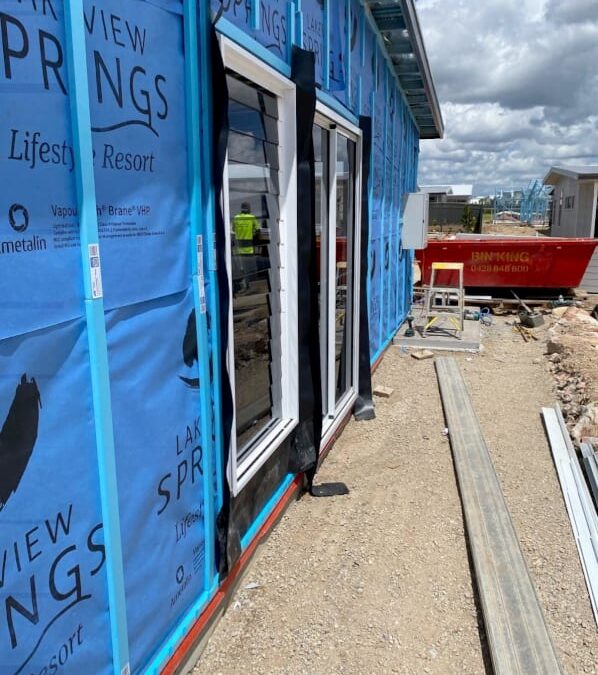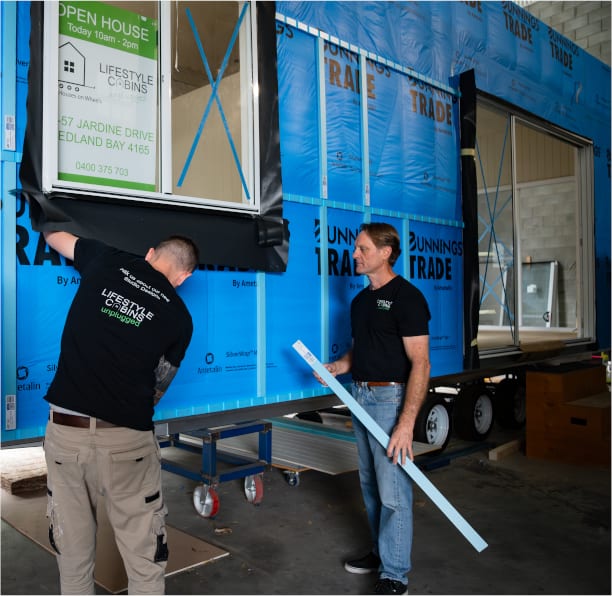Why we need thermal break cavity battens
While Australia has one of the most innovative building industries, known for top-quality workmanship and a can-do attitude, one area of regulation lags behind the rest of the world – potentially costing homeowners tens of thousands in untimely repairs.
Other countries have mandated drained and vented cavity systems within timber framed buildings, protecting against condensation within lightweight clad walls, however, Australia has not yet legislated this.
Good builders using ‘best practice’ insist on using cavity battens as a prudent measure to increase the lifespan and condition of the building, but most homeowners and customers are not aware of how vital this construction method really is.
For the uninitiated, battened cavity spaces sit behind cladding systems and offer a second line of defence against moisture ingress however it is the protection against water vapour that travels through wall frames that is the most significant factor.
Without these cavities, the condensation that forms inside the walls is what leads to toxic mould, unsightly mildew and in the case of timber frames – rot.
What the research is saying
Countries like New Zealand have long acknowledged that the key to ensuring the long-term integrity of timber framed buildings is careful cavity construction.
Of course, ventilation varies depending on cladding type, cavity size and the material used to batten the cavities and this has only now been studied in the past twenty or so years.
New Zealand building research organisation, BRANZ, conducted research that found 20mm deep cavities were “just the right size”.
Narrower cavities restrict ventilation and sagging and bulging of insulation can bridge the cavity, while deeper cavities provide no additional benefits (and increase the length of the fixings to an unpractical length), which is how they landed at 20mm being the ideal size.
The New Solution
“As more and more Australian builders insist on using cavity battens to increase the lifespan of timber framed houses, we knew there had to be a better way,” ATI Co-Founder, Aaron Hinkley said.
“Our Cavi-System™ Strips use 21st century technology to solve an age-old building concern, with a product that is low-waste, low-cost and easy to install.
“In fact, the Cavi-Systen adds barely any time at all to the construction process with its built-in double-sided tape adhesion system, but it will significantly increase the longevity of a home.”
After extensive consultation with industry-leading builders who understand the importance of cavity battens, the ATI team developed the Cavi-Break® cavity batten strip and the Cavi-Vent™ cavity closer strip – the world’s most versatile, cost-effective and simple solution yet.
Join the cavity batten revolution and commit to building lasting, healthy buildings today, with our Cavi-Break and Cavi-Vent Strips.
Cavi-Break® thermal break strip
Our Cavi-Break Strip is a highly efficient cavity batten and is also a thermal break solution for steel and timber frames, which adheres to the ideal size findings from BRANZ at 20mm deep.
Benefits
Cavi-Break® Strips can be used with a variety of cladding materials like hardwood, fibre cement, fibreboard, aluminum, stone, metal, vinyl and more.
Unlike traditional cavity batten options like pine and plywood, the Cavi-Break Strips are lightweight and can be cut using hand tools – simply ‘cut and stick’ using our heavy-duty adhesive backing.
It’s never been easier to protect a home with the Cavi-Break Strips, which are fire retardant as well as being resistant to mould, mildew and rot and with a compressive strength around 300Kpa, no compression when fixing the cladding to the frame.
Cavi-Vent™ cavity closer strip
The ATI Cavi-Vent® Strip is a castellated thermal break ventilated cavity closer & drainage batten.
It is the must have solution for Australian builders to effectively manage condensation, mitigating hidden moisture-related damage and ensuring your structures endure.
It’s the straightforward solution for building longevity.
NCC 2025 Changes
Help is also on it’s way with the NCC 2025 changes regarding thermal breaks and cavity ventilation.
Read our article about the looming NCC 2025 changes in May 2025 and what it means for builders regarding, energy efficiency, thermal breaks, cavity ventilation, condensation management and how they can prepare.
Learn More
Related Articles
WST Building & Construction using Cavi-Break™ thermal batten in residential steel frame construction
Cavities Behind Lightweight Cladding: Problems, the Science and Best Practice
Exploring The Role of Thermal Breaks
NCC 2025 Changes to Thermal Breaks and Condensation Management: What You Need to Know
Product Information
Cavi-Break® product page and brochure
Cavi-Vent™ product page and brochure
Consult the ATI Downloads section for technical details
R-Value Calculator
Try our Wall R-Value Calculator to compare different cavity batten solutions
Purchase
Where to purchase – major building supplies stockists
Usage Estimator – calculate how many strips you need



